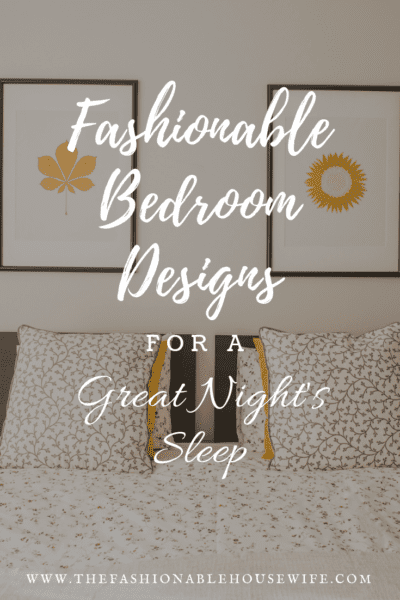
One in three adults in America don’t get enough sleep, and that is a worry for our health since sleep deprivation is linked to an increased risk of obesity, heart disease, anxiety, and many more conditions. The media often mentions the importance of establishing a regular bedtime routine and keeping stress levels down, but what if the one thing stopping you from getting quality sleep is your bedroom design? Our surroundings have an important effect on our psyche, so if you are keen on getting more zzzs and waking up refreshed and rejuvenated, ensure your bedroom contains all the elements it needs.
Dark, cool environments are conducive to sleep
Your bedrooms should be as dark as possible at night time, to ensure you sleep in sync with your circadian rhythms (your ‘internal body clock’). These rhythms help you feel sleepy at night and alert by day. Use fashionable blackout curtains to ensure no light seeps in. These come in a variety of shades (including warm metallic or light Scandinavian inspired hues) so you can really enjoy yourself at the selection stage. In the summer months, use fine (preferably Egyptian cotton) bedsheets and keep the internal temperature of your bedroom at between 60º and 70º Fahrenheit. When lying in bed trying to fall asleep, your body temperature decreases slightly, and these temperatures will facilitate this process. To up the design appeal of your air conditioner, opt for a modern unit that is silent and that complements the colors of your bedroom well. These days, cooling units come in a plethora of colors and attractive metallic shades so why settle for staid white?
Investing in a great bed
Because sleep is so important for your health, make sure your bed is comfortable and wide enough to allow you to stretch and change positions. Choosing the right mattress for your sleeping position is key, so if you are shopping for a new one, make sure you have expert advise. If you sleep on your back, for instance, you will need a firmer mattress but if you prefer sleeping on your side, memory foam will ensure all main points of your body are supported so you don’t experience shoulder or hip pain. Foam mattresses can vary in height so if you have opted for an Eastern-inspired low bed, your mattress should be low lying and discreet so as not to clash style-wise with the rest of your bedroom. Classic four-poster beds, meanwhile, look great with a high mattress and topper.
Choosing calming colors
Color should be more than a matter of taste in a bedroom since studies have shown that they can have a big effect on our mood. A Minnesota State University study found that red environments increase the stress response, while green and white interiors have the opposite effect. Blue is also considered a calming color. Think of the accents in your room as well. Cushions, bedside furniture, and closets should ideally be complementary with your main color, so the eye does not have to adapt to marked contrasts when scanning the room.
When designing a room for comfort, you don’t need to forego style to create a restful environment. Opt for curtains, air conditioning, and bed styles that appeal to your taste but also support good sleep at a functional level. Finally, consider the effect of issues such as color and clutter on mood. Make sure your bed is neat and tidy, and keep gadgets and television sets to other common spaces so that you begin to associate your bedroom with disconnection and relaxation.



